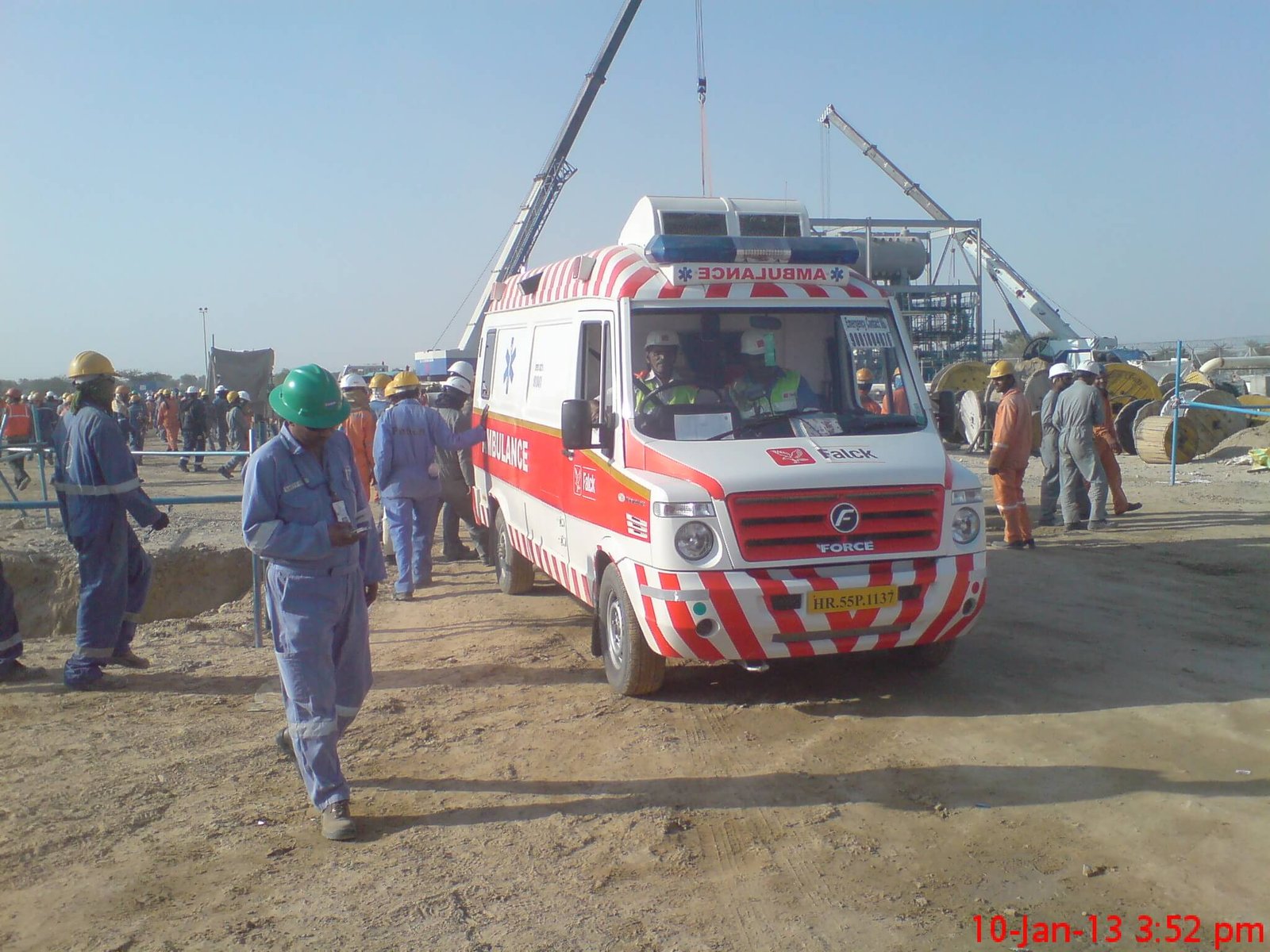Workmen’s Compensation Act, 1923
This Act (8 of 1923) came into force from 1-7-1924. It was lastly amended the Act 46 of 2000 w.e.f. 08-12-2000. It has 4 chapters, 36 section and 4 schedules. The Act is made to provide compensation for accidental injury to workmen. Under Sec.4, while calculating compensation, maximum limit of ‘monthly wages’ to considered is Rs. 4000/ – if monthly wages exceed Rs. 4000 Short summary is given below:
The Act extends to the whole of India. A list of ‘dependants’ is given u/s 2(1) (d). Definitions (Sec.2): Definition of employer is very wide and includes his managing agent, legal representative of a deceased employer, contractor etc.
‘Workmen’ includes employees working in railway, ship, aircraft, motor vehicle, abroad or as in Schedule-II wherein some 48 categories are specified.
‘Wages’ excludes travelling allowance or concession, special expenses and contribution towards any pension or P.F.
Partial disablement (temporary or permanent) and total disablement (temporary or permanent) are defined as same in the ESI Act and the W.C Act.
Employer’s Liability (sec 3): He is liable to pay compensation if accident arise out of and in course of employment. He is not liable for injury-
- If disablement lasts less than 3 days,
- If the workmen takes drink or drugs,
- Will-fully removes or disregards any safety guard or device provided for his safety, but he is liable even under such conditions if injury results in death or permanent total disablement. If a workmen contracts any occupational disease (i) in Part-A of Schedule III or (ii) Part B of Schedule III if he is in continuous service of more than 6 month or (iii) in part C of Schedule III if he is in the service of one or more employers for such continuous period as may be specified, it shall be deemed to be an injury by accident arisen out of and in course of the employment and makes the employers liable for compensation. The disease should be directly attributable to his employment.
If workmen claims or agrees to take compensation under this Act, his suit for damages in a Civil Court is not maintainable.
Amount of Compensation (Sec. 4)
| Types of injury | Amount |
| Death | 50% of monthly wages × Relevant factor based on age (from Schedule-iv) or Rs. 80,000/- whichever is more |
| Permanent total disablement | 60% of monthly wages × Relevant factor from Schedule-iv or Rs. 90,000/- whichever is more. |
| Permanent partial disablement | 1. For injury in Part II of Schedule I such % of compensation payable in item (b) above as % of loss of earning capacity mentioned in column-3 2. For injury not specified in Schedule-I, such % of compensation payable in item (b) above as proportionate to the loss of earning capacity (permanent) certified by the medical practitioner. |
| Temporary disablement (total or partial) | Half-monthly payment of the sum equivalent to 25% of monthly wages till the ceasing of the disablement or 5 years whichever is shorter. |
In case of death, the funeral expenditure of Rs. 2500/- shall be deposited with the Commissioner. Maximum limit of ‘monthly wages’ is Rs. 4000/- in above calculation. Compare Schedule I and III of W.C. Act, Schedule II and III of ESI Act and the Schedule of the Personal Injuries (Compensation Insurance) Act, 1963. They seem to be similar.
Penalty for late payment (Sec. 4A) Compensation shall be paid as soon as it falls due maximum bank interest is payable. If delay is not justified, penalty up to 50% of the compensation also payable.
A show-cause notice to the employer is necessary before passing an order for penalty. The interest and penalty both shall be paid to the workman or his dependent, as the case may be.
Distribution of compensation (Sec. 8): Compensation payable in case of death, payable to woman or legally disable (e.g. minor) person, shall be paid through Commissioner (Court) only not directly. Direct payment shall not be deemed compensation.
An employer can give advance up to 3 months wages which is deductible and the Commissioner shall repay it to the employer.
The Commissioner shall give receipt to the depositor, notice to dependant(s), make inquiry and if satisfied that no dependant exists, he shall repay the balance to the employer. If the dependant is women or legally not eligible, the same may be investigated and mode of payment during non-eligibility may be directed for the welfare. In other cases direct payment is possible. The Commissioner has the power to change or amend his order for investment if satisfied with the reason.
Other: Method of calculating ‘monthly wages’ is prescribed u/s 5. Half monthly payment can be reviewed u/s 6 and converted into lump-sum u/s 7. Compensation is protected and cannot be assigned, attached or charged (sec.9). Claim is to be made within 3 years (sec.10). Delay may be justified. A Commissioner can directly send a notice to the employer to furnish within 30 days information of the death of his workman or his explanation (sec 10A). Reports of fatal accident or serious bodily injury shall be given to the Commissioner within 7 days (sec. 10B). An injured workman will not refuse to undergo a medical examination; otherwise, his compensation may be suspended for the period of his refusal or for the period of his return if he has left the premises without examination. In case of contract labor, the principal employer is liable if the contractor fails to pay compensation (sec.12) Where any employer has entered into any contract with any insurer for liability to a workman, the insurer will pay to the workman as per liability accepted. The workman has to give notice to the insurer for his claim as soon as he becomes aware that his employer has become unable to pay (sec. 14). Compensation can become the first charge on assets transferred by the employer (sec. 14-A) Prescribed return is to be sent to authority u/s 16. Any contract or agreement of relinquishing the right of compensation is null and void u/s 17. The maximum penalty for offenses is Rs. 5,000/-, Limit of filing complaint is 6 months and sanction of the commissioner is necessary for protection (see 18A).
Chapter-3 (sec. 19 to 31) is regarding Commissioners, their appointment, venue, power, the appearance of parties, evidence, registration of agreements, appeals, recovery, etc.
Chapter-4 gives rule-making powers to the State and procedure (sec. 32 to 36)
Schedule 1 to 4 is regarding (1) Injury and loss of earning capacity, (2) List of different 48, workmen (3) List of Occupational Diseases and (4) Age factors to calculated compensation, respectively.
The Workmen’s Compensation Rules, 1924:

Under section 32 of the WC Act, these rules were notified on 26.6.1924.
Deposit of compensation (Rules 6 to 10): In a death case the compensation shall be deposited with Form-A and in another case with Form-AA. The receipt will be in Form-B. The statement of disbursements to be given to the employer (by commissioner) shall be in From-C. A dependant’s application for the order to deposit compensation shall be in From G.
Deposit u/s 8(2) i.e. any sum more than Rs. 10/- shall be in Form-D and its receipt shall be in From-E.
The Commissioner shall display a list of deposits received by him and invest for the benefit of dependants in Government securities or Post Office cash certificates or Post Office Saving Bank.
Report of Accidents (Rules 11 & 12): Report of accident u/s 10B shall be in Form EE. An employer can present a memorandum of inquiry of any accident.
Medical Examination (Rule 13 to 18): The employer shall arrange free of charge medical examination at his premises or at the workman’s residence. Time will be between 6 am to 7 pm if the workman does not consent to other time. A workman receiving half-monthly payment will be examined at his residence and not more than twice in the first month or more than once in any subsequent month. After the suspension of the right to compensation, if the workman offers himself for examination he shall be examined within 72 hours at the place and time fixed by the employer. The woman shall be examined by in presence of a female doctor.
Compensation for Occupational Diseases:
Compensation for occupational diseases is payable u/s 3 of the Workmen’s Compensation Act, 1923. Subsection (2 to 4) provide as under:
- Contracting of the disease peculiar to the employment and specified in Part A, B & C of Schedule III (mentioned in foregoing part 7.2.4) is to be considered as an injury by accident arisen out of and in the course of the employment.
- For Part A diseases, compensation is payable irrespective of any length of service as the incidence rate or possibility of such diseases is high and very obvious.
- For Part B diseases, compensation is payable provided a service of 6 months is completed, as these diseases are very specific to certain chemicals and their incidence rate is slightly lower than that of Part A diseases.
- For Part C diseases, compensation is payable, irrespective of the length of service and even if the affected workers have worked under one or more employers, as these are lung diseases and their effect is delayed i.e. visible after 5 to 10 years of service.
- Compensation is payable for Part B&C diseases even after the cessation of the service.
- For Part C diseases and for working under more than one employer, all the employers are liable to pay compensation in proportions decided by the W.C Commissioner.
- For any other disease, if it is directly attributable to a specific injury by accident arising out of and in the course of employment, the compensation is payable.
- Compensation is not payable if any suit for damages is filed in the court or a suit for damages shall not be maintainable if a claim for compensation is filed before the W.C. Commissioner or if any agreement is made between the workman and his employer to pay in accordance with the WC Act.
- The doctor shall refer Schedule I while assessing the percentage loss of earning capacity.
- The maximum period of half-monthly payment for temporary disablement is 5 years, and wages limit of Rs. 4000 is not applicable in this case.
Worked Examples:
Section 4 and Schedule I, III and IV are to be seen simultaneously. For example, if death occurs due to any disease mentioned in Sch. III, payment should be as per Section 4 (1) (a).
Example 1 : A worker of 24 years (completed) and drawing monthly wages of Rs.3800, dies due to any disease mentioned in Part A or C or any disease in Part B if his service is of more than 6 months, amount of compensation shall be-
=0.50×3800×218.47 (Age factor)
=1900×218.47=Rs. 415,093 or 8,000 whichever is more.
Note: If monthly wages are more than Rs. 4000 per month, consider Rs. 4000/- only for the purpose of calculation. The age factor is derived from Schedule IV based on completed years of age.
Example 2: A worker gets any of the permanent total disablement mentioned in Part I of Sch. I, due to occupational disease in Part III, and his age monthly wages are 48 and Rs. 5600 respectively. Compensation will be-
=0.60×4000×159.80
2400×159.80 Rs. 3,83,520 or Rs. 90000 whichever is more.
Example 3: A worker loses partial vision of one eye (item 26A, part II, Sch. I) due to occupational cataract by infrared radiation (item 11, Part B, part II Sch. I) due to occupational cataract by infrared radiation (item 11, Part B, Sch. III) at the completed age of with monthly wages Rs. 6500. Compensation shall be
0.10×4000×184.17
=400×184.17 Rs. 73668.
Example 4: A worker suffering from silicosis (e.g. any lung disease) – injury not specified in Sch. I, but certified by doctors as ‘80% loss of earning capacity (permanent partial disablement)’ at his age of 58 and monthly wages Rs. 9600, his compensation shall be
0.80×4000×124.70
=3200×124.70=Rs. 3,99,040.
Example 5: A worker’s whole middle finger is amputated (item 31, Part II, Sch. I) due to chrome ulceration a and his lung damaged by 30% permanent partial disablement as assessed by the doctor, due to exposure to chromium vapors, and his age and monthly wages being 38 and Rs. 5600 respectively, his compensation shall be-
(1) For finger damage
0.12×4000×189.56
=480×189.56=Rs. 90988.80
(2) For lung damage
=0.30×4000×189.56
=1200×189.56=Rs. 2,27,472
Total of Rs. 90988.80+227472.00 = 3,18,460.80
Comparing with permanent total disablement [Sec 4 (1) (C), Explanation – I]
0.60×4000×189.56
=2400×189.56=Rs. 4,54,944 or Rs. 90000 whichever is more.
As amount Rs. 318460.80 does not exceed Rs. 454944, total compensation payable in this case is Rs. 318460.80.
Example 6: A worker worked in three sugar mills in a continuous period of 16 years and it was detected that he was suffering from bagassosis due to sugarcane dust. This was found at his age of 45 and monthly wages Rs. 7800. The lung damage (permanent partial disablement) assessed by a doctor is 50%. Calculate the compensation payable by each of the three employers.
Compensation
= 0.50 × 4000 × 169.44
=2000 × 169.44 = Rs. 338880
As per Section (2-A), each employer may pay Rs. 338880/3 = 112960 to the worker, or in the proportion decided by the WC Commissioner depending on the facts of his case. The employer in whose sugar mill suppose the dust concentration was higher or for the longer duration, may be directed by the Court to pay more proportion of the total amount.
Example 7: A worker while handling organo phosphorous compound, undergoes toxic effect and remains absent for 3 months as per medical finding of this cause and advice. To what compensation he is entitled to this temporary disablement? He is drawing Rs. 4500 per month.
As per Section 4 (1) (d), he is entitled to a half-monthly payment of 25% of his monthly wages i.e 0.25 × 4500 = Rs. 1125 from the 16th day from the date of disablement.
Here the ceiling of Rs. 4000 per month is not applicable. It is applicable to death or permanent total disablement only | Explanation II to Sec4 (1) 1.





